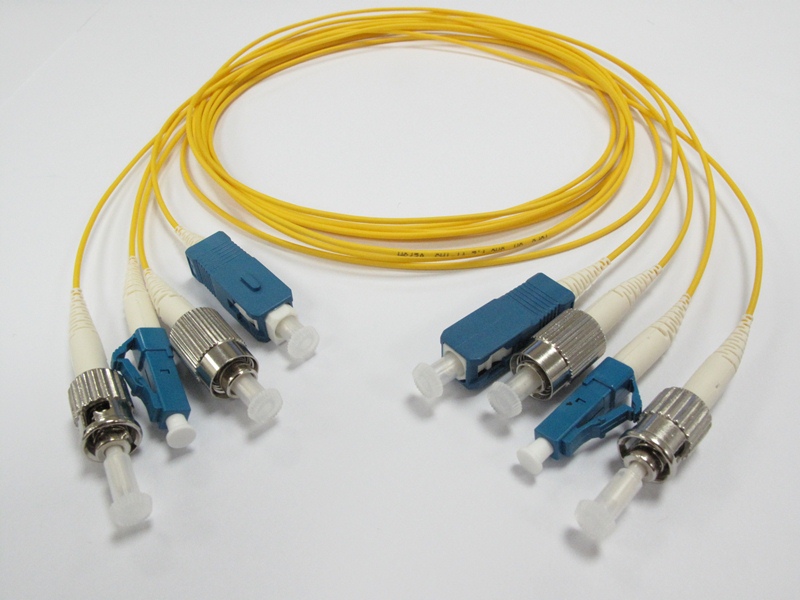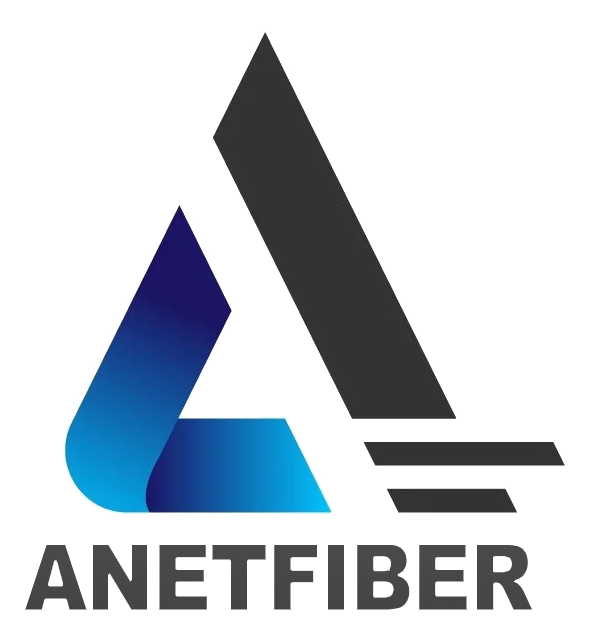5 Types of Fiber Optic Patch Cords for Network Applications

Introduction to Fiber Optic Patch Cords
Fiber optic patch cords play a crucial role in modern network applications, facilitating high-speed data transmission and connectivity. Fiber optic patch cords, also known as patch cables, are essential components in fiber optic cable types. They are used to connect various network devices, such as switches, routers, and servers, enabling seamless data transfer within a network.
The significance of patch cords in network applications cannot be overstated. They serve as the vital link between different network components, ensuring efficient and reliable data transmission. Whether it's for local area networks (LANs), wide area networks (WANs), or data center connectivity, patch cords are indispensable for establishing robust and high-performance network infrastructures.
Understanding Single-mode and Multi-mode Patch Cords
Fiber optic patch cords come in two primary types: Single-mode and Multi-mode. Each type has distinct characteristics and is suited for specific network applications.
Single-mode Patch Cords
Single-mode patch cords are designed to transmit data over long distances with high efficiency. They have a smaller core size, typically around 9 microns, which allows only one mode of light to propagate. This results in reduced light dispersion, enabling the transmission of signals over extended distances without significant loss. Single-mode patch cords are ideal for long-haul telecommunications and high-speed data networks due to their ability to maintain signal integrity over considerable distances.
Characteristics
Core Size: Approximately 9 microns
Transmission Distance: Suited for long-distance transmission
Signal Integrity: Maintains signal strength over extended distances
Uses in Data Center Connectivity
In data center environments, where seamless connectivity and minimal signal loss are paramount, single-mode patch cords play a crucial role. They are commonly employed to establish connections between networking equipment, such as servers, storage devices, and switches, ensuring reliable data transmission within the data center infrastructure.
Multi-mode Patch Cords
Multi-mode patch cords are designed for shorter reach applications within local area networks (LANs) and other short-distance communication systems. They feature a larger core size, typically around 50 or 62.5 microns, allowing multiple modes of light to propagate. While this design facilitates easier coupling of light into the core, it also results in greater modal dispersion over longer distances.
Characteristics
Core Size: Approximately 50 or 62.5 microns
Transmission Distance: Suited for short-distance applications
Modal Dispersion: Greater modal dispersion over longer distances
Network Applications
Multi-mode patch cords find extensive use in LAN environments, including office buildings and campus networks where the transmission distance is relatively limited. They are also utilized in multimedia systems and small-scale data networks where cost-effective solutions for moderate bandwidth requirements are essential.
Exploring Pre-terminated, Armored, and Outdoor Patch Cords
In addition to single-mode and multi-mode patch cords, there are other specialized types that cater to specific network requirements. Pre-terminated patch cords, armored patch cords, and outdoor patch cords offer unique features that make them suitable for distinct applications.
Pre-terminated Patch Cords
Pre-terminated patch cords are designed with connectors already attached to their ends, allowing for swift and hassle-free installations. This pre-termination eliminates the need for on-site connector terminations, reducing installation time and labor costs. The ease of installation makes them particularly beneficial in scenarios where rapid deployment is essential.
Ease of Installation
The pre-termination of these patch cords significantly simplifies the installation process, enabling network technicians to quickly establish connections without the complexities associated with field terminations.
Applications
Pre-terminated patch cords are commonly utilized in environments where time-sensitive installations are required, such as data center expansions or network upgrades. Their convenience and efficiency make them ideal for addressing immediate connectivity needs without compromising on performance.
Armored Patch Cords
For demanding industrial or commercial settings that expose cables to potential damage from physical stress or environmental factors, armored patch cords provide robust protection. These patch cords feature additional layers of protective materials, such as metal armor or reinforced jackets, ensuring enhanced durability and resilience against external hazards.
Durability and Protection
The armored design shields the internal fibers from crushing forces, impacts, and abrasions, making them suitable for harsh operating conditions where standard cables may be vulnerable to damage.
Use Cases
Armored patch cords are widely deployed in industrial facilities, manufacturing plants, and outdoor installations where ruggedness is paramount. They offer reliable connectivity solutions in environments prone to mechanical wear and tear.
Outdoor Patch Cords
Designed to withstand challenging weather conditions and exposure to UV radiation, outdoor patch cords are engineered for outdoor network deployments. These ruggedized cables feature weather-resistant materials that ensure optimal performance even in extreme outdoor environments.
Weather Resistance
The materials used in outdoor patch cords provide resistance against moisture, temperature variations, and sunlight exposure, safeguarding the integrity of data transmission in outdoor settings.
Outdoor Network Applications
From telecommunications infrastructure in remote locations to outdoor surveillance systems, outdoor patch cords play a vital role in establishing dependable connections for various outdoor network applications.
Indoor, SC, LC, ST, and MPO Patch Cords
In network infrastructure, indoor patch cords serve as essential components for establishing seamless connectivity within enclosed environments. These patch cords are designed to meet the specific requirements of indoor networking applications.
Indoor Patch Cords
Features
Indoor patch cords are characterized by their flexibility and versatility. They are available in various lengths and connector configurations to accommodate diverse networking setups. The cables are often constructed with flame-retardant materials to ensure safety in indoor settings. Additionally, they exhibit high tensile strength and resistance to bending, making them suitable for routing within confined spaces.
Indoor Uses
Indoor patch cords find widespread use in office buildings, educational institutions, and commercial facilities where structured cabling systems are deployed. They facilitate the interconnection of network equipment such as switches, routers, and end-user devices, enabling efficient data transmission within indoor LAN environments.
SC, LC, ST, and MPO Patch Cords
Connector Types and Their Importance
The choice of connectors plays a critical role in determining the effectiveness of fiber optic connections. Different connector types offer distinct advantages based on their design and application requirements.
SC patch cords, featuring a push-pull coupling mechanism, provide reliable connections with low insertion loss. Their simple push-pull latching system ensures secure mating even in high-density installations.
LC patch cords, known for their compact size and high performance, are widely favored for dense networking applications. Their small form factor allows for increased port density while maintaining excellent signal integrity.
ST patch cords, characterized by their bayonet-style coupling mechanism, offer robust connections suitable for harsh industrial environments. They are commonly used in manufacturing facilities and industrial automation systems.
MPO patch cords, equipped with multi-fiber connectors, enable efficient data transmission in high-speed networks. Their multi-fiber design streamlines connectivity in data centers and telecommunications networks with demanding bandwidth requirements.
Matching Connectors with Applications
Selecting the appropriate connector type is crucial for ensuring optimal network performance. SC patch cords are ideal for backbone cabling and long-distance transmissions due to their low signal loss characteristics. LC patch cords excel in high-density environments such as data centers and enterprise networks where space optimization is essential. ST patch cords are well-suited for rugged industrial settings that demand reliable connections under challenging conditions. Meanwhile,MPO patch cords cater to high-bandwidth applications requiring efficient multi-fiber connectivity.
Applications of Fiber Optic Patch Cords in Network Settings
Enhancing Data Center Connectivity
Fiber optic patch cords play a pivotal role in enhancing data center connectivity, ensuring seamless and reliable transmission of high volumes of data. The use of fiber optic patch cords in data centers enables efficient interconnection between servers, storage systems, and networking equipment, contributing to the overall performance and scalability of the data center infrastructure. With their high bandwidth capabilities and low signal loss characteristics, fiber optic patch cords are instrumental in meeting the demanding connectivity requirements of modern data centers.
Broadening Network Applications
In addition to data centers, fiber optic patch cords broaden network applications across diverse settings, from office environments to outdoor fields. In offices, these patch cords facilitate high-speed connections between workstations, switches, and routers, supporting the seamless flow of information within LAN environments. Furthermore, as network applications extend to outdoor fields such as remote industrial sites or surveillance systems, fiber optic patch cords enable robust and dependable connectivity even in challenging outdoor conditions.
From Offices to Outdoor Fields
The versatility of fiber optic patch cords extends from indoor office settings to outdoor fields, providing reliable connectivity solutions for a wide range of network applications.
Future Trends in Fiber Optic Use
As technology continues to advance, the future trends in fiber optic use are expected to focus on enhanced efficiency and expanded applications. Innovations in fiber optic technology will likely lead to increased adoption in various industries and further advancements in network connectivity solutions.
See Also
Advantages of Pre-terminated Fiber Patch Cables in Network Setups
Key Fiber Optic Cable Management Solutions for Network Systems
Crucial Fiber Optic Cable Connectors You Need to Understand
Key Factors to Consider When Choosing Fiber Optic Patch Cable Lengths


